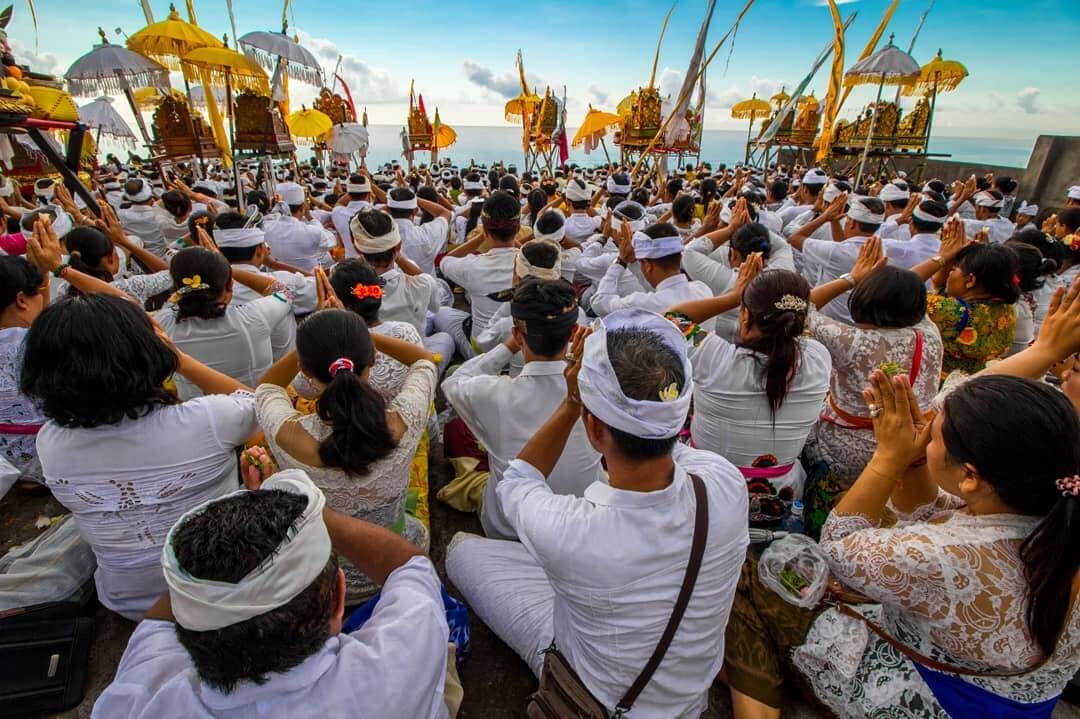In a few days, specifically for Hindus, the Nyepi Day celebration will take place on Wednesday, March 22, 2023. Prior to the celebration, Hindus will perform several activities and traditions.
However, during Nyepi Day, Hindus will not engage in any activities. The atmosphere of the Hindu community will be much quieter than usual. This is especially true in Bali, where most of the population practices Hinduism. During Nyepi Day, they will even turn off their mobile data.
Nevertheless, there are several rituals and traditions in Bali to welcome Nyepi Day, as follows:
- Melasti
Melasti is one of the rituals usually performed by Hindus two to three days before Nyepi Day. The word Melasti comes from the combination of mala, which means dirty, and asti, which means clean. It means to cleanse all the bad things and create goodness, harmony, and peace in the universe.
During Melasti, Hindus will lead the procession of Ida Bhatara or God. They will walk in a line towards the ocean, beach, or springs to clean all the dirt. This ritual usually takes place in the morning or evening.
- Tawur Kesanga
Tawur Kesanga is a ritual that is usually carried out one day before Nyepi Day. This is also known as a sacrifice or pecaruan ceremony.
Tourists visiting Bali can observe this tradition in several areas, starting from the provincial level at Pura Besakih, then moving to the district level in places like Catus Pata. It continues to the sub-district, village, hamlet, and even the Caru ritual in each private house.
Various offerings, including animals like ducks, geese, chickens, dogs, cows, and more, are used in the Caru ritual. The purpose of Tawur Kesanga is to distance the universe from Bhuta Kala and disasters.
- Pengerupukan
The next tradition is Pengerupukan. This tradition involves a parade of ogoh-ogoh, which are big demonic effigies, carried around the village or city with torches.
Tourists can also witness this tradition during their visit to the Island of Gods. The ogoh-ogoh, which symbolize disasters and Bhuta Kala, must be destroyed or burned after the parade to avoid such disasters.
- Catur Brata Penyepian
The pinnacle of Nyepi Day is the Catur Brata Penyepian tradition, which begins at 6 am and lasts for a full day, or 24 hours.
This tradition has four main prohibitions for Hindus to clear their minds and meditate. The prohibitions include Amati Geni, which means no lighting of fires, lamps, or candles; Amati Karya, which means no work or activity; Amati Lelungan, which means no travelling outside of the home; and Amati Lelanguan, which means no entertainment, such as watching TV or playing games.
- Ngembak Geni and Omed-Omedan Traditions
After completing the Catur Brata Penyepian tradition, Hindus will perform Ngembak Geni, which means freely lighting a fire or turning on the lights. During this ritual, Hindus will visit each other and ask for forgiveness if they have done wrong. This is after the period of meditation during Nyepi Day.
Next, the Omed-Omedan tradition is usually held in the Sesetan area, Denpasar. After the prayer for young unmarried people, they will be divided into two groups and pull each other while embracing each other.
Those are some of the unique traditions of Nyepi Day in Bali. For tourists or those who plan to visit Bali, it may be interesting to witness these traditions firsthand. The Nyepi Day celebration in Bali is not only a sacred ritual but also an opportunity to experience and learn about the culture of the Balinese people. It is a perfect time to relax, reflect, and reconnect with nature and the universe.

